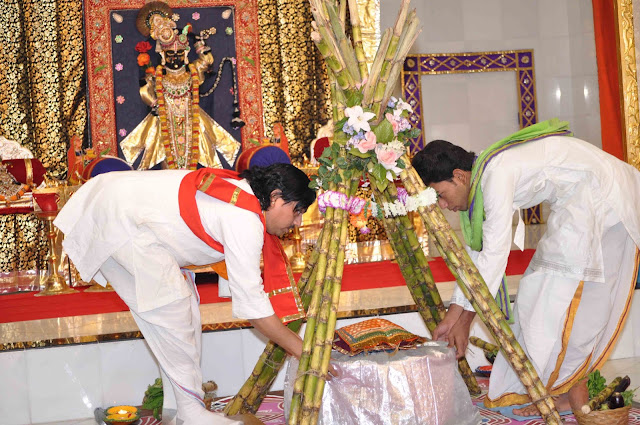Hanuman Jayanti Celebration
Hanuman Jayanti is a very popular Hindu festival; it is celebrated as the birthday of Lord Hanuman- an ardent devotee of Lord Ram. Hanuman jayanti celebrated on the full moon day of Chaitra month in Hindu calendar. Lord Hanuman is the most popular Hindu deity as he is believed to be alive & still exists on earth in his full form. Legends suggest that Lord Hanuman was born to King Kesari & Queen Anjani on mount sumeru. Lord Hanuman is also considered as the incarnation of Lord Shiva; Anjani performed intense devotion to Lord Shiva for 12 years in order to get a son like Lord Shiva which resulted into the incarnation of Lord Shiva as Lord Hanuman.On Hanuman jayanti people visit to Hanuman temples & offers religious things to Lord Hanuman; sweets, beetle nut, fruits & dry fruits are offered to Lord Hanuman. Intense chanting of Holy Scriptures dedicated to Lord Hanuman is a common practice on this day. It is a very strong belief among Hindus that by visiting Hanuman temple on the day of Hanuman Jayanti fulfills all their desires; also Lord Hanuman being the strongest among all Lords, he is also responsible to protect his devotees from all kind of dangers in every world. On Hanuman Jayanti special prayers are conducted at the sunrise as it is believed that Lord Hanuman was born at the time of dawn, hence dawn is very special time on the day of Hanuman jayanti.
Hanuman Jayanti Dates 2018
31st of March, 2018
Hanuman Jayanti In Andhra: - In Andhra, Hanuman Jayanti is celebrated for 41 days, which starts on Chaitra Purnima and ends on the 10th day during Krishna Paksha in Vaishakha Month. In Andhra Pradesh devotees begin 41-days Deeksha on Chaitra Purnima and conclude it on Hanuman Jayanthi day.
Hanuman Jayanti in Karnataka: - In Karnataka, Hanuman Jayanti is observed on Shukla Paksha Trayodashi during Margashirsha month. The day is popularly known as Hanuman Vratam.
Hanuman Jayanti in Tamil Nadu: - In Tamil Nadu, Hanuman Jayanti is known as Hanumath Jayanthi and observed during Margashirsha Amavasya. In Gregorian calendar Tamil Hanuman Jayanti falls in January or December.
It is believed that Hanuman was born at Sunrise. On Hanuman Jayanti day temples start spiritual discourses at dawn before Sunrise and stop it after Sunrise.
Hanuman, an ardent devotee of Lord Rama and Sita himself, is also known as "Anjaneya".





